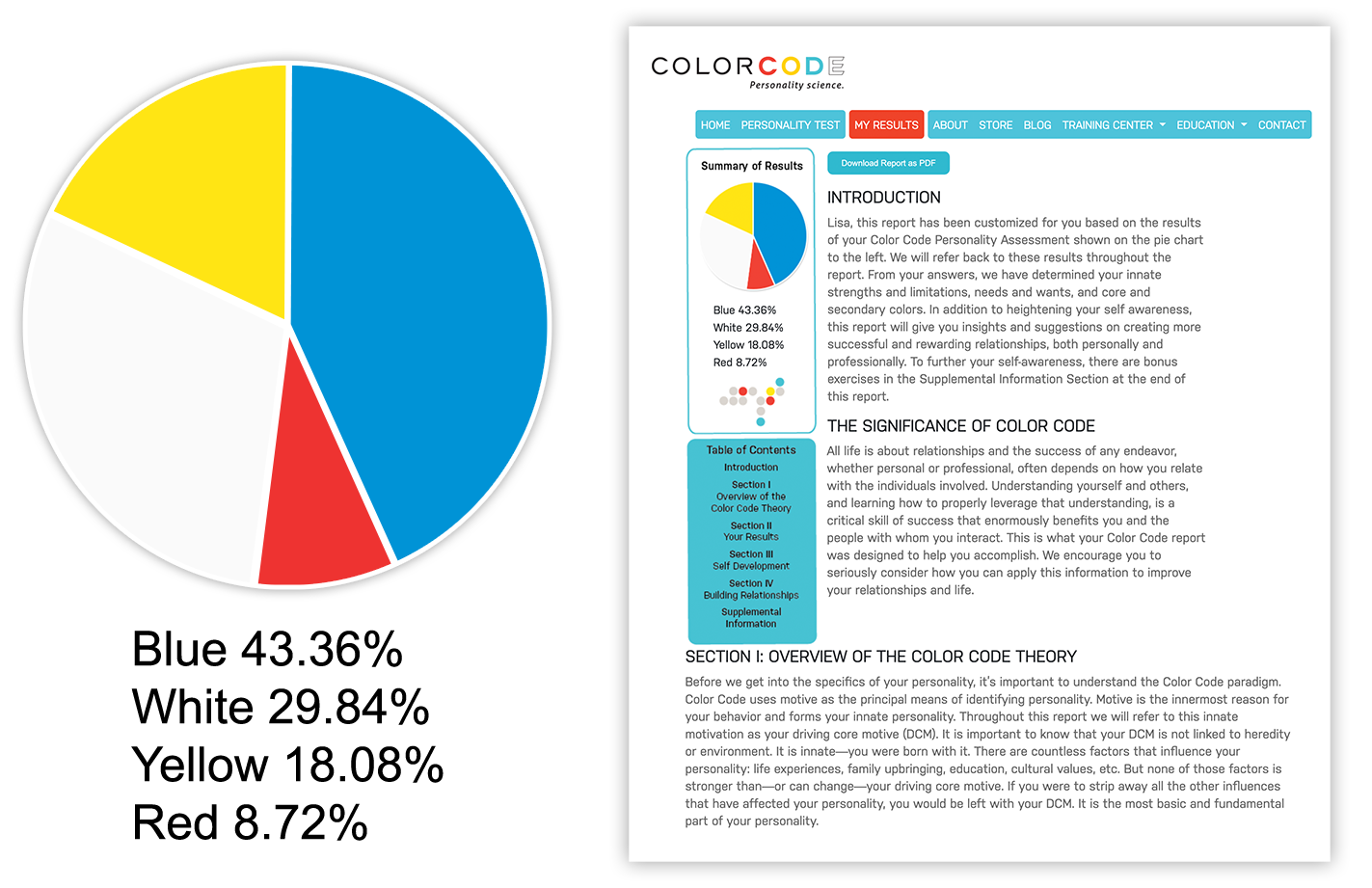Suspicious is a LIMITATION of the BLUE personality in the Color Code Personality Assessment.
Suspicious
"A suspicious mind will see evidence of poison wherever it looks"― Ian Gibson
Lisa Ulshafer /  Are you constantly questioning the motives of those around you? Do you find it hard to trust even your closest friends and family? Being suspicious can have a significant impact on your thoughts, emotions, and behavior. It involves a constant state of mistrust or doubt towards others, leading to skepticism, fear, and apprehension. Suspicion can strain relationships, hinder effective communication, and create a negative and paranoid outlook on life. It can also lead to stress, anxiety, and a sense of isolation. Overcoming suspicion requires addressing underlying issues and developing healthy ways to build trust, foster positive relationships, and navigate interactions with others in a more balanced and constructive manner.
Are you constantly questioning the motives of those around you? Do you find it hard to trust even your closest friends and family? Being suspicious can have a significant impact on your thoughts, emotions, and behavior. It involves a constant state of mistrust or doubt towards others, leading to skepticism, fear, and apprehension. Suspicion can strain relationships, hinder effective communication, and create a negative and paranoid outlook on life. It can also lead to stress, anxiety, and a sense of isolation. Overcoming suspicion requires addressing underlying issues and developing healthy ways to build trust, foster positive relationships, and navigate interactions with others in a more balanced and constructive manner.
Here are some common signs that you may be suspicious:
- Constantly doubting the intentions of others, even in benign situations.
- Feeling suspicious and distrustful towards people without concrete evidence or valid reasons.
- Being overly cautious and guarded in your interactions with others.
- Engaging in frequent questioning, probing, or investigating behaviors to validate suspicions.
- Having a persistent fear of being deceived or taken advantage of by others.
- Feeling suspicious even after receiving reassurance or evidence of trustworthiness from others.
- Having difficulty in trusting others, even those who have not given you a reason to doubt them.
- Avoiding or distancing yourself from others due to suspicions or mistrust.
- Interpreting innocent actions or statements of others as malicious or deceitful.
- Feeling anxious, stressed, or constantly on edge due to suspicion about the motives or actions of others.
Here are 10 strategies to help you overcome being suspicious:
- Address underlying fears or past traumas: Sometimes, suspicion may be rooted in unresolved past traumas or fears of being hurt or deceived. Consider seeking professional help to explore and address any underlying emotional wounds or fears that may be contributing to your suspicious tendencies.
- Challenge your assumptions: Recognize that your suspicions may not be based in reality, and challenge your assumptions by gathering evidence and seeking alternative explanations. Avoid relying solely on subjective perceptions or interpretations.
- Focus on the present moment: Practice mindfulness and focus on the present moment, rather than worrying about the future or dwelling on the past. This can help reduce feelings of suspicion and anxiety.
-
Practice mindfulness and self-awareness: Become aware of your thoughts, feelings, and behaviors related to suspicion. Mindfulness techniques, such as meditation or deep breathing, can help you become more aware of your thoughts and emotions without judgment, allowing you to respond to them in a more balanced manner.
-
Build trusting relationships: Work on building trusting relationships with others through open communication, empathy, and understanding. Foster healthy relationships based on mutual respect and trust, and avoid jumping to conclusions or making assumptions about others' motives or actions.
-
Communicate openly and honestly: If you have concerns or suspicions about someone's actions or motives, communicate directly and openly with them in a non-accusatory manner. Ask for clarifications, seek explanations, and give the benefit of the doubt until proven otherwise.
-
Practice empathy and compassion: Try to put yourself in others' shoes and understand their perspectives, emotions, and experiences. Cultivating empathy and compassion towards others can help you develop a more balanced and understanding mindset, reducing suspicion.
-
Practice self-care: Taking care of yourself physically, emotionally, and mentally can help you manage stress and anxiety, which can fuel suspicion. Make sure to get adequate sleep, eat well, engage in regular exercise, and practice self-care activities that promote relaxation and well-being.
-
Challenge black-and-white thinking: Avoid viewing situations, people, or actions in simplistic black-and-white terms. Recognize that the world and human behavior are complex and multi-dimensional, and avoid jumping to extreme conclusions based on limited information or assumptions.
-
Cultivate a positive and trusting mindset: Practice gratitude, focus on positive aspects of life and relationships, and intentionally cultivate a trusting mindset. Train yourself to see the good in others and give them the benefit of the doubt, unless proven otherwise.
Letting go of suspicion frees you from the burden of constant doubts and mistrust so you can build healthier and more meaningful relationships with others. You can experience greater happiness and contentment as you learn to let go of negative assumptions and cultivate a positive and trusting mindset. You can communicate openly and authentically, resolving conflicts in a constructive manner. You can also enjoy a sense of freedom and liberation from the emotional weight of suspicion, allowing you to fully engage in life and experience more joy, connection, and fulfillment.
Suspicious
― Ian Gibson
 Are you constantly questioning the motives of those around you? Do you find it hard to trust even your closest friends and family? Being suspicious can have a significant impact on your thoughts, emotions, and behavior. It involves a constant state of mistrust or doubt towards others, leading to skepticism, fear, and apprehension. Suspicion can strain relationships, hinder effective communication, and create a negative and paranoid outlook on life. It can also lead to stress, anxiety, and a sense of isolation. Overcoming suspicion requires addressing underlying issues and developing healthy ways to build trust, foster positive relationships, and navigate interactions with others in a more balanced and constructive manner.
Are you constantly questioning the motives of those around you? Do you find it hard to trust even your closest friends and family? Being suspicious can have a significant impact on your thoughts, emotions, and behavior. It involves a constant state of mistrust or doubt towards others, leading to skepticism, fear, and apprehension. Suspicion can strain relationships, hinder effective communication, and create a negative and paranoid outlook on life. It can also lead to stress, anxiety, and a sense of isolation. Overcoming suspicion requires addressing underlying issues and developing healthy ways to build trust, foster positive relationships, and navigate interactions with others in a more balanced and constructive manner.
Here are some common signs that you may be suspicious:
- Constantly doubting the intentions of others, even in benign situations.
- Feeling suspicious and distrustful towards people without concrete evidence or valid reasons.
- Being overly cautious and guarded in your interactions with others.
- Engaging in frequent questioning, probing, or investigating behaviors to validate suspicions.
- Having a persistent fear of being deceived or taken advantage of by others.
- Feeling suspicious even after receiving reassurance or evidence of trustworthiness from others.
- Having difficulty in trusting others, even those who have not given you a reason to doubt them.
- Avoiding or distancing yourself from others due to suspicions or mistrust.
- Interpreting innocent actions or statements of others as malicious or deceitful.
- Feeling anxious, stressed, or constantly on edge due to suspicion about the motives or actions of others.
Here are 10 strategies to help you overcome being suspicious:
- Address underlying fears or past traumas: Sometimes, suspicion may be rooted in unresolved past traumas or fears of being hurt or deceived. Consider seeking professional help to explore and address any underlying emotional wounds or fears that may be contributing to your suspicious tendencies.
- Challenge your assumptions: Recognize that your suspicions may not be based in reality, and challenge your assumptions by gathering evidence and seeking alternative explanations. Avoid relying solely on subjective perceptions or interpretations.
- Focus on the present moment: Practice mindfulness and focus on the present moment, rather than worrying about the future or dwelling on the past. This can help reduce feelings of suspicion and anxiety.
-
Practice mindfulness and self-awareness: Become aware of your thoughts, feelings, and behaviors related to suspicion. Mindfulness techniques, such as meditation or deep breathing, can help you become more aware of your thoughts and emotions without judgment, allowing you to respond to them in a more balanced manner.
-
Build trusting relationships: Work on building trusting relationships with others through open communication, empathy, and understanding. Foster healthy relationships based on mutual respect and trust, and avoid jumping to conclusions or making assumptions about others' motives or actions.
-
Communicate openly and honestly: If you have concerns or suspicions about someone's actions or motives, communicate directly and openly with them in a non-accusatory manner. Ask for clarifications, seek explanations, and give the benefit of the doubt until proven otherwise.
-
Practice empathy and compassion: Try to put yourself in others' shoes and understand their perspectives, emotions, and experiences. Cultivating empathy and compassion towards others can help you develop a more balanced and understanding mindset, reducing suspicion.
-
Practice self-care: Taking care of yourself physically, emotionally, and mentally can help you manage stress and anxiety, which can fuel suspicion. Make sure to get adequate sleep, eat well, engage in regular exercise, and practice self-care activities that promote relaxation and well-being.
-
Challenge black-and-white thinking: Avoid viewing situations, people, or actions in simplistic black-and-white terms. Recognize that the world and human behavior are complex and multi-dimensional, and avoid jumping to extreme conclusions based on limited information or assumptions.
-
Cultivate a positive and trusting mindset: Practice gratitude, focus on positive aspects of life and relationships, and intentionally cultivate a trusting mindset. Train yourself to see the good in others and give them the benefit of the doubt, unless proven otherwise.
Letting go of suspicion frees you from the burden of constant doubts and mistrust so you can build healthier and more meaningful relationships with others. You can experience greater happiness and contentment as you learn to let go of negative assumptions and cultivate a positive and trusting mindset. You can communicate openly and authentically, resolving conflicts in a constructive manner. You can also enjoy a sense of freedom and liberation from the emotional weight of suspicion, allowing you to fully engage in life and experience more joy, connection, and fulfillment.
Change can be challenging and difficult to do all on your own.
Contact Lisa today to make the kind of changes in your life that lift you to your greatest potential.

2 Free Template Downloads
#1. Developing Strengths & Becoming Charactered
#2. Removing My Limitations
Fill out the form below to receive your free templates:
Click to explore the Strengths & Limitations of each color:
FULL Analysis
A completely customized report that is designed to fully analyze your personality and provide bonus tools to help you on your way to personal development.
Results Include:
- Pie chart showing you what you scored in all 4 colors.
- Comprehensive analysis containing 35+ page report with customized content that describes your individual personality style in depth.
- List of your innate strengths and limitations.
- A breakdown of secondary colors and how they affect your personality.
- Throughout are videos, activities and other tools embedded to help you more fully understand your results.



